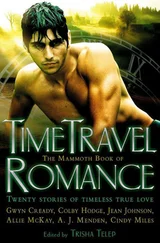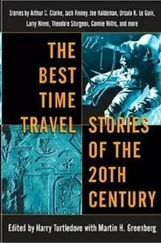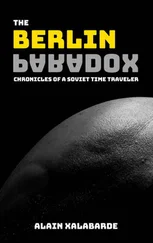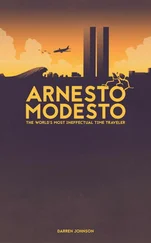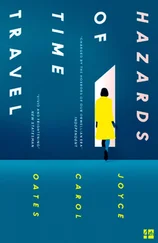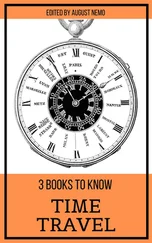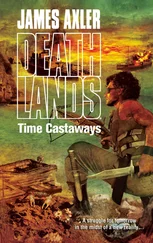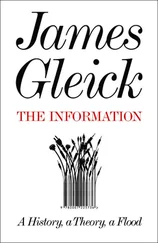James Gleick - Time Travel
Здесь есть возможность читать онлайн «James Gleick - Time Travel» — ознакомительный отрывок электронной книги совершенно бесплатно, а после прочтения отрывка купить полную версию. В некоторых случаях можно слушать аудио, скачать через торрент в формате fb2 и присутствует краткое содержание. Год выпуска: 2016, Издательство: Knopf Doubleday Publishing Group, Жанр: Старинная литература, на английском языке. Описание произведения, (предисловие) а так же отзывы посетителей доступны на портале библиотеки ЛибКат.
- Название:Time Travel
- Автор:
- Издательство:Knopf Doubleday Publishing Group
- Жанр:
- Год:2016
- ISBN:нет данных
- Рейтинг книги:5 / 5. Голосов: 1
-
Избранное:Добавить в избранное
- Отзывы:
-
Ваша оценка:
- 100
- 1
- 2
- 3
- 4
- 5
Time Travel: краткое содержание, описание и аннотация
Предлагаем к чтению аннотацию, описание, краткое содержание или предисловие (зависит от того, что написал сам автор книги «Time Travel»). Если вы не нашли необходимую информацию о книге — напишите в комментариях, мы постараемся отыскать её.
Time Travel — читать онлайн ознакомительный отрывок
Ниже представлен текст книги, разбитый по страницам. Система сохранения места последней прочитанной страницы, позволяет с удобством читать онлайн бесплатно книгу «Time Travel», без необходимости каждый раз заново искать на чём Вы остановились. Поставьте закладку, и сможете в любой момент перейти на страницу, на которой закончили чтение.
Интервал:
Закладка:
In Minkowski’s world past and future lie revealed before us like east and west. There are no one-way signs. So Eddington added one: “I shall use the phrase ‘time’s arrow’ to express this one-way property of time which has no analogue in space.” He noted three points of philosophical import:
1. It is vividly recognized by consciousness.
2. It is equally insisted upon by our reasoning faculty.
3. It makes no appearance in physical science except…
Except when we start to consider order and chaos, organization and randomness. The second law applies not to individual entities but to ensembles. The molecules in a box of gas comprise an ensemble. Entropy is a measure of their disorder. If you put a billion atoms of helium into one side of a box and a billion atoms of argon into the other side and allow them to bounce around for a while, they will not remain neatly separated but will eventually become a uniform—random—mixture. The probability that the next atom you find at a given place will be helium, rather than argon, will be 50 percent. The process of diffusion is not instantaneous and it runs in one direction. As you watch the distribution of the two elements, past and future are easily distinguishable. “A random element,” said Eddington, “brings the irrevocable into the world.” Without randomness, the clocks could run backward.
“The accidents of life” is the way Feynman liked to put it: “Well, you see that all there is to it is that the irreversibility is caused by the general accidents of life.” If you throw a cup of water into the sea, let time pass, and dip your cup back in, can you get the same water back? Well, you could—the probability is not zero. It’s just awfully small. Fifteen billiard balls could smash around a table and finally come to a stop in a perfect triangle—but when you see that happen, you know that the film has been reversed. The second law is a probabilistic law.
Mixing is one of those processes that follow the arrow of time. Unmixing takes work. “You cannot stir things apart,” says Stoppard’s Thomasina—entropy explained in five words. (Her tutor, Septimus, replies, “No more you can, time must needs run backward, and since it will not, we must stir our way onward mixing as we go, disorder out of disorder into disorder until pink is complete, unchanging and unchangeable, and we are done with it for ever.”) Maxwell himself wrote:
Moral. The 2nd law of Thermodynamics has the same degree of truth as the statement that if you throw a tumblerful of water into the sea, you cannot get the same tumblerful of water out again.
But Maxwell predated Einstein. For him, time required no particular justification. He already “knew” that the past is past and the future still to come. Now matters are not so simple. In 1949, in a essay titled “Life, Thermodynamics, and Cybernetics,” Léon Brillouin said:
Time flows on, never comes back. When the physicist is confronted with this fact he is greatly disturbed.
To the physicist, it feels that a troublesome gap lies between the microscopic laws, where time has no preferred direction, because the laws are reversible, and the macroscopic world, where the arrow of time points from past to future. Some are content to say that fundamental processes are reversible and macro-scale processes are mere statistics. This gap is a disconnect—a lapse in explanation. How do you get from one place to the other? The gap even has a name: the arrow of time dilemma, or Loschmidt’s paradox.
Einstein admitted that the problem disturbed him at his moment of greatest understanding, in the creation of the general theory of relativity—“without my having succeeded in clarifying it.” In a diagram of the four-dimensional space-time continuum, let’s say that P is a “world-point” lying between two other world-points, A and B. “We draw a ‘time-like’ world-line through P, ” suggested Einstein; “does it make any sense to provide the world-line with an arrow, and to assert that B is before P, A after P ?” Only when thermodynamics enters the picture, he concluded—but he also said that any transfer of information involves thermodynamics. Communication and memory are entropic processes. “If it is possible to send (to telegraph) a signal from B to A, but not from A to B, then the one-sided (asymmetrical) character of time is secured, i.e. there exists no free choice for the direction of the arrow. What is essential in this is the fact that the sending of a signal is, in the sense of thermodynamics, an irreversible process, a process which is connected with the growth of entropy.”
In the beginning, therefore, the universe must have had low entropy. Very low entropy. It must have been in a highly ordered state, which is also an extremely improbable state. This is a cosmic mystery. Ever since, entropy has grown. “That is the way toward the future,” said Feynman, years later, when he was a famous man assembling his knowledge of physics into textbook form.
That is the origin of all irreversibility, that is what makes the processes of growth and decay, that makes us remember the past and not the future, remember the things which are closer to that moment in history of the universe when the order was higher than now, and why we are not able to remember things where the disorder is higher than now, which we call the future.
And in the end?
—
THE UNIVERSE TENDS toward maximum entropy, the condition of ultimate disorder from which there is no return. The eggs will all have scrambled, the sand castles blown down, the sun and stars faded to uniformity. H. G. Wells already knew about entropy and heat death. This is the destiny the Time Traveller nears, when he abandons Weena, departs the year 802,701, leaves behind the troglodytic Eloi and bovine Morlocks, the ruined Palace of Green Porcelain, its Gallery of Palaeontology long deserted, its library a wilderness of rotting paper, and drives his machine onward, swaying and vibrating through millions of years of grayness into a final twilight brooding over the earth. If you read The Time Machine when you are young, I think this is what lodges in your memory or your dreams, this final tableau where nothing happens. In one draft Wells called it “The Further Vision.” If Eden is alpha, here is omega. Eschatology for the enlightened. No hell, no apocalypse. Not with a bang but a whimper.
This twilight beach recurs again and again in science fiction. We come to land’s end—J. G. Ballard’s “derelict landscape,” the terminal beach, where the last man says farewell: “Such a leave-taking required him to fix his signature on every one of the particles in the universe.” In Wells’s unforgettable final pages, the Time Traveller sits shivering in his saddle and watching “the life of the old earth ebb away.” Nothing stirs. All he sees is stained red, pinkish, bloody, in the dim light of the dying sun. He imagines some black thing flopping about, but it is only a rock.
I stared aghast at the blackness that was creeping over the day….A cold wind began to blow….Silent? It would be hard to convey the stillness of it….The darkness thickened….All else was rayless obscurity….A horror of this great darkness came on me. The cold, that smote my marrow.
This is the way the world ends.
* A retronym is a lexical time machine. It calls up entities past and present and juxtaposes them in the mind’s eye.
SEVEN
A River, a Path, a Maze
Time is a river that sweeps me along, but I am the river; it is a tiger that mangles me, but I am the tiger; it is a fire that consumes me, but I am the fire.
—Jorge Luis Borges (1946)
Читать дальшеИнтервал:
Закладка:
Похожие книги на «Time Travel»
Представляем Вашему вниманию похожие книги на «Time Travel» списком для выбора. Мы отобрали схожую по названию и смыслу литературу в надежде предоставить читателям больше вариантов отыскать новые, интересные, ещё непрочитанные произведения.
Обсуждение, отзывы о книге «Time Travel» и просто собственные мнения читателей. Оставьте ваши комментарии, напишите, что Вы думаете о произведении, его смысле или главных героях. Укажите что конкретно понравилось, а что нет, и почему Вы так считаете.


